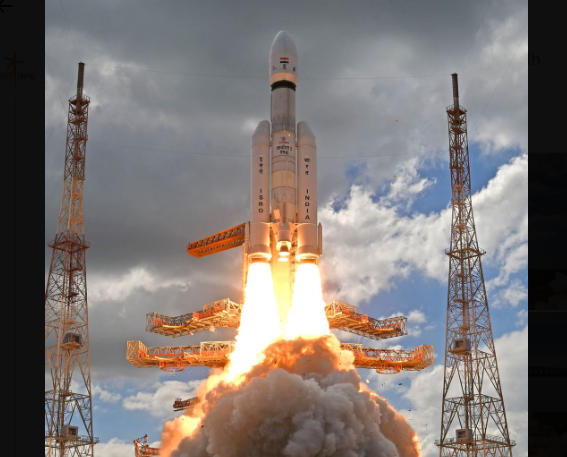
Chandrayaan-3 decoded: Here’s how ISRO plans to soft land on Moon in 45 days

With the successful launch of ISRO’s Bahubali, LVM3 (earlier called as GSLV Mk-III) rocket and the insertion of Chandrayaan-3 (CY3) along with the propulsion module into the planned geo transfer orbit (GTO), the CY3 spacecraft has commenced its 45-day long journey towards the Moon. Mission director Mohan Kumar announced immediately after the launch that the CY3 craft had achieved a precise target orbit. P Veeramuthuvel, CY3 project director, added that the “spacecraft is healthy in orbit”.
On August 24, the craft is expected to soft-land on the Moon. This momentous step has completed one of the 10 steps to reach the Moon. The other nine will unfold in the coming days.
Explained: 10 things you need to know about Chandrayaan-3 that takes off on July 14
The maiden attempt by ISRO to soft-land on the Moon was made in 2019; alas, the mission failed as the craft crashed into the lunar surface minutes before the landing, dashing the hopes and dreams of scientists and the general public. The goals of the CY3 mission begin from where the CY2 left unfinished. ISRO aims to safely land the lander and rover on the lunar surface. ISRO has decided to retain the same name it gave to the CY2 lander and rover, Vikram (short for Vikram Sarabhai, father of the Indian space programme) and Pragyan (Intelligent, alluding to the inbuilt AI capability) in the CY3 mission too.
Safe and sound
From the last shot on the control panel, it appears the craft follows a looping path around the Earth, swinging close at one point and far away at another. In this highly elliptical orbit, when the spacecraft is near Earth, called perigee, it is just around 169.9 km away. However, when the craft is at its farthest point, called apogee, it will be 34,601.9 km away. This marginally differs from the intended orbit of 170 km and 36,500 km, respectively. The craft circles in an orbit that is inclined at 21.3 degrees.
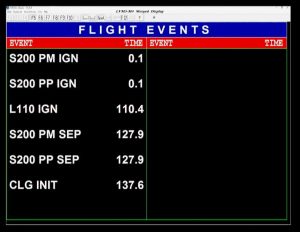
Last time in CY2, ISRO used ‘burn to depletion’, using even the last drop of the cryogenic fuel to boost the craft with an apogee of 45,475 km. Consequently, the fuel in the propulsion unit was conserved and helped the orbiter to have a longer life span. On the other hand, with no predetermined orbit, the tracking and tracing of the craft was a challenge. This time with no orbiter in the configuration, ISRO played safe and fixed a definitive orbit of 36,500 apogee. After verifying the health of all systems aboard the spaceship, the next phase of the mission will soon commence.
10 crucial steps to Moon
Launching the craft is just a first step. Then comes packing the craft in an orbit called a geo-transfer orbit or GTO. The third step, called orbital raising, increases the height of each successive perigee, retaining the apogee to be around 170 km. The propulsion module, affixed to the CY3 spacecraft, provides the necessary push to raise the orbit. From the current 34,601.9 km perigee, the height of the orbit will be increased in successive orbits.
Expert view: Chandrayaan-3: 10 key upgrades that improve chances of ISRO’s Moon mission
Once sufficient impulse is generated, the craft is propelled to reach a pre-designated point in space for its rendezvous with the Moon. The Moon orbits around the earth, so sending the craft towards where the Moon is now will be in vain. The trajectory of the craft and the Moon will be computed, and the intersection point will be identified. It is to this point that the craft must be aimed.
During this long journey covering 3.84 lakh km, its path will be influenced by other massive solar objects: Sun, Jupiter, etc. Therefore, careful watch on the flight path must be kept, and as and when needed, the craft must be steered towards the rendezvous point. The craft and the Moon must arrive at this spot simultaneously. Failing which, the craft will miss the Moon, and landing will not be possible.
The sixth step is to make the craft fall into the lap of the Moon’s gravity. The seventh is to stabilise its orbit around the Moon. During the eighth step, the propulsion module is decoupled from the lander. Until now, the legs of the lander face backwards. Therefore to orient the lander, the craft has to make a somersault in space and bring its legs face forward. The lander rover combo soft lands on the lunar surface during the ninth step. Finally, the ramp unfolds, and the rover rolls down to the lunar surface in the tenth step.
Why India’s march to Moon is unhurried
It took less than 17 minutes for the LVM3-M4 rocket to take the CY3 spacecraft to space. However, the craft will take 40 to 45 days to land on the Moon.
In comparison, the first craft to speed towards the Moon, launched on January 2, 1959 – the Soviet Union probe Luna 1 – passed by Moon in just 34 hours. Apollo 11, the first human lunar mission, just took four days, six hours and 45 minutes to land on the Moon. Recently, in 2006, a New Horizons probe passed the Moon in just eight hours and 35 minutes on its way to Pluto. ISRO’s journey to the Moon is, in contrast, unhurried.
The reason: the power of the rocket. While NASA’s Delta IV Heavy can carry 28.8 tonnes kg to Low Earth Orbit (LEO), Russia’s Proton can take 22.8 tonnes. Chinese Long March 5 can lift 25 tonnes to LEO. Though the most powerful in ISRO’s arsenal, LVM3 of ISRO can take just 8 tonnes to LEO.
Watch: What does the AI onboard Chandrayaan-3 do? | The Federal Interview
ISRO substituted the lack of a powerful rocket with an ingenious launch technique. To escape from the clutches of earth’s gravity, the spacecraft has to be propelled to near escape velocity, which is 11.7 km per second. However, LVM3 can give only an impulse of 10.2 kilometres per second while inserting the spacecraft in its GTO. Like you cut the diamond with a diamond, ISRO plans to use the same gravity to prevent it from escaping earth’s gravity’s powerful grip.
Gravity to act as slingshot
In multi-story apartments, the delivery boy flings newspapers to the balcony rather than to each doorstep. Just a toss is adequate for throwing the paper to the first floor. But to reach the third-floor balcony, one has to swing the arms all around and sling the newspaper. The gravity assist works like a slingshot.

Suppose you throw a ball at a bus speeding towards you. After bouncing from the bus, the ball’s velocity will be far greater than the initial throw. On the other hand, imagine throwing a ball at the bus receding from us. The ball bouncing back from a bus moving away from us will have lesser velocity than the initial. In the first case, some energy from the bus is transferred to the ball, making it move faster. In the second case, energy from the ball is imparted onto the bus. The ball bounces back slower than the initial velocity.
Now Earth is racing around the Sun, akin to the speeding bus. Therefore, one can increase or decrease the spacecraft’s velocity by bouncing it on the moving earth. If we make the spacecraft rotate in the same direction as the motion of Earth around the Sun, the speed will increase. However, the speed will decrease if we make the spacecraft rotate in the opposite direction.
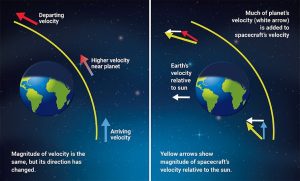
The CY3 rotates around the Earth in the same direction as Earth’s motion around the Sun. Hence, a small part of Earth’s momentum will be transferred to the craft, increasing its velocity every time it makes a round.
Higher and higher
The idea is to slowly raise the distance of the apogee of the orbit to toss the craft into the gravitational influence of the Moon.
When a swing rises, its kinetic energy changes to potential energy; as it falls, the potential energy changes back to kinetic energy. The only way to increase the height of the swing is to increase the total energy. One should kick the ground as we swing up or ask someone to stand at the back and push the swing in every oscillation.
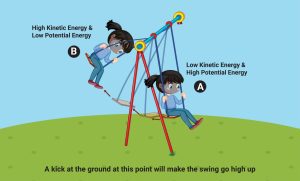
A spacecraft going around the Earth is akin to a swing. When the craft is near the Earth, its kinetic energy is more, and its potential energy is less. As it moves away, the reverse is true. Energy can be added to this system by firing the rocket in the opposite direction of the motion. The best result is obtained if the firing occurs when the craft is at its perigee. The firing of the rocket increases the total energy, and the spacecraft sore up to a greater height. By every time firing the rocket as it reaches the perigee point, the height of the craft can be increased successively.
Chandrayaan 3: How Tamil Nadu is connected with ISRO’s lunar mission
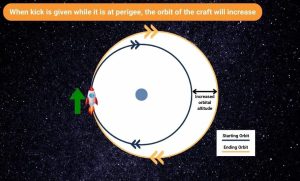
Like a slingshot is whirled many times before being released, the CY3 will take five rounds around Earth before being hurled towards the Moon in its sixth orbit. Nearly the craft will spend about 16 days going around the Earth five times to gather the necessary velocity to escape from the gripping hands of Earth’s gravity. Once adequate escape velocity is gained, the craft will be headed to a point called ‘neutral gravity point’ in space about 62,630 km from the surface of the Moon. The CY3 is said to be in its ‘Lunar transfer orbit’.
Out of the proposed six orbit-raising manoeuvres, during the first, third, fourth and fifth, the apogee of the craft will be raised. During the second, there will be a minor increase in the perigee. The sixth one, slated to take place on July 31, if all goes well, will be the slingshot that will ferry the craft towards the Moon.
Soft landing a challenging task
A soft landing on Moon is a challenging task. There have been about 50 lunar soft landing attempts in the past, of which only 24 have been successful so far. In other words, one in two have failed. The Soviet Union, the United States, and China are the only countries that have successfully carried out soft landings.
The missions by Israeli private space agency SpaceIL in 2019 and Japanese private company Ispace’s Hakuto-R Mission-1 in 2023 failed. Learning from failures and from the upgrades in CY3, ISRO is confident this time around, the mission will succeed. If the ISRO touches down its lander and rover near the South Pole of the Moon, India will become the fourth country to do so.
Chandrayaan-3: Timeline of ISRO’s moon missions from 2003 to 2023
On the sidelines, ISRO also used this opportunity to tweak and test the launch vehicle to carry human passengers for its prestigious Gagayanyaan project. The nozzles of the solid boosters, S200 and the Vikas L110 engines have been human-rated in this launch, says mission director Mohan Kumar addressing the gathering post-launch.
(Dr TV Venkatswaran is a senior scientist with Vigyan Prasar)


